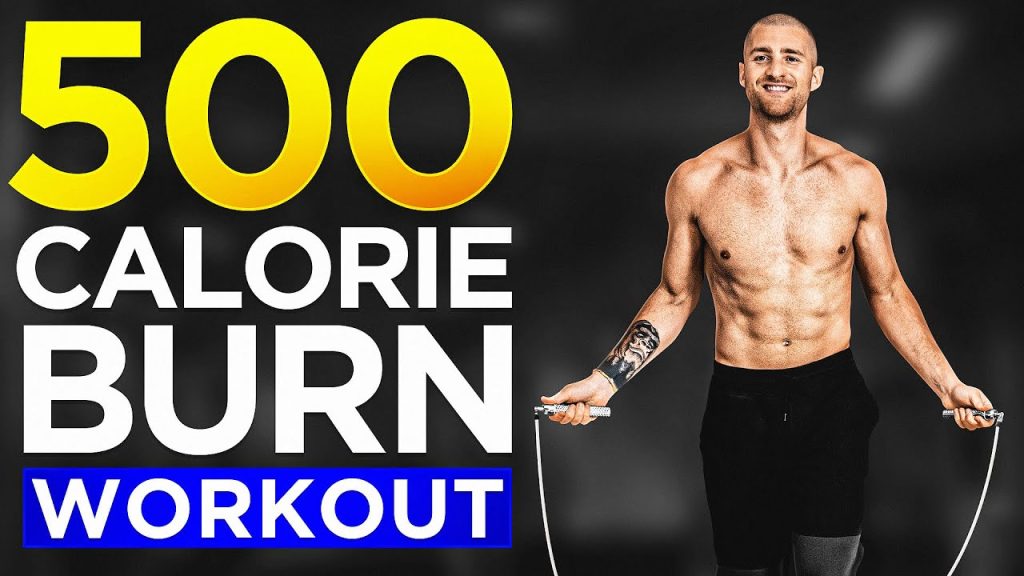How Many Jumps to Burn 500 Calories
Most people need to jump rope 2,700 to 3,600 times to burn 500 calories. The number of jumps needed to burn 500 calories varies based on factors like weight and intensity. On average, jumping rope burns 10-15 calories per minute. For a person weighing around 155 pounds, it might take roughly 33 to 50 minutes of continuous jumping. However, increasing intensity or adding intervals can shorten this time. Always prioritize proper form and consult a professional before starting any new exercise routine.
Calories and Energy Expenditure
Before delving into the specifics of jumping, it’s essential to grasp the concept of calories and how our bodies utilize them. Calories are units of energy found in food, which our bodies burn to fuel various functions, including physical activity. The process of burning calories involves converting stored energy into usable energy, which powers our muscles during movement. Also, read about What is a quick protein
How Jumping Helps in Burning Calories
Jumping is a high-intensity, cardiovascular exercise that engages multiple muscle groups simultaneously. It increases heart rate, breathing rate, and metabolic rate, leading to significant calorie expenditure. Furthermore, jumping exercises improve cardiovascular health, boost endurance, and enhance coordination and agility.
Factors Affecting Calorie Burn
The number of calories burned through jumping varies depending on several factors, including body weight, intensity, duration, fitness level, and metabolism. Heavier individuals tend to burn more calories due to the increased effort required to move their bodies against gravity. Similarly, higher-intensity jumps performed for longer durations result in greater calorie expenditure.
Calories Burned per Minute of Jumping
Calculating the exact number of calories burned per minute of jumping can be challenging due to the numerous variables involved. However, rough estimates suggest that an average person can burn approximately 10-15 calories per minute of moderate-intensity jumping. This rate may increase to 20-25 calories per minute with higher-intensity jumps or jump rope intervals. Discover more about How to Lose Weight Without Exercise

Example Jumping Workouts
To burn 500 calories through jumping, one can design a variety of workouts tailored to individual fitness levels and preferences. For instance, a high-intensity interval training (HIIT) session incorporating jump squats, burpees, and plyometric lunges can effectively elevate calorie burn. Alternatively, a jump rope routine alternating between double unders, single-leg jumps, and crossovers can achieve similar results.
Strategies to Maximize Calorie Burn
To maximize calorie burn during jumping workouts, it’s crucial to incorporate a mix of exercises targeting different muscle groups. Adding variations such as tuck jumps, side-to-side jumps, and vertical jumps challenges the body in new ways, leading to increased energy expenditure. Additionally, combining jumping exercises with strength training moves like push-ups, squats, and lunges enhances overall calorie burn and muscle development.
Safety Precautions and Tips
While jumping exercises offer numerous benefits, it’s essential to prioritize safety to prevent injury and ensure long-term adherence to fitness goals. Always start with a proper warm-up to prepare the body for exercise and conclude with a cooldown to aid recovery. Wear supportive footwear and choose a suitable surface for jumping to minimize stress on joints. Listen to your body’s signals and avoid pushing beyond your limits to prevent overuse injuries.
Tracking Progress and Setting Goals
To monitor progress and stay motivated, consider keeping a workout journal to record the number of jumps, duration, and intensity of each session. Set realistic goals based on your current fitness level and gradually increase the challenge as you improve. Celebrate milestones along the way to maintain enthusiasm and momentum towards achieving your ultimate fitness objectives.

Combining Jumping with Other Exercises
While jumping alone can provide a comprehensive workout, incorporating it into a diverse fitness routine offers additional benefits. By integrating jumps with activities like running, cycling, swimming, or weight training, you engage different muscle groups and prevent monotony. Cross-training enhances overall fitness, reduces the risk of overuse injuries, and promotes balanced muscle development.
Real-Life Success Stories
Numerous individuals have achieved remarkable fitness transformations through consistent dedication to jumping exercises. Whether it’s shedding excess pounds, improving cardiovascular endurance, or enhancing athletic performance, the benefits of regular jumping workouts are undeniable. Real-life success stories serve as inspiration and motivation for those embarking on their fitness journey.
Myths and Misconceptions About Jumping and Calorie Burn
Despite its effectiveness, jumping exercises are often surrounded by myths and misconceptions. Common fallacies include the belief that jumping is harmful to joints or that it only targets specific muscle groups. In reality, when performed correctly with proper technique and form, jumping is a safe and efficient way to strengthen muscles, bones, and connective tissues while burning calories.
Nutritional Considerations
To support optimal performance and recovery during jumping workouts, it’s essential to fuel your body with a balanced diet rich in nutrients. Prioritize whole foods such as lean proteins, complex carbohydrates, healthy fats, fruits, and vegetables. Stay hydrated by drinking an adequate amount of water throughout the day, especially before, during, and after exercise.

Long-Term Benefits of Regular Jumping Workouts
In addition to immediate calorie burn and fitness improvements, engaging in regular jumping workouts yields long-term benefits for overall health and well-being. From weight management and reduced risk of chronic diseases to enhanced mood and cognitive function, the positive effects of consistent physical activity extend far beyond the gym. By making jumping exercises a regular part of your lifestyle, you invest in your future health and vitality.
Conclusion
Jumping is a versatile and effective form of exercise that offers numerous benefits for physical fitness and overall well-being. Whether you’re aiming to burn calories, improve cardiovascular health, or enhance athletic performance, incorporating jumping workouts into your routine can help you achieve your goals. By understanding the factors influencing calorie burn, implementing safety precautions, and staying consistent with your efforts, you can experience the transformative power of jumping exercises firsthand.
FAQs
Q. How long do I need to jump to burn 500 calories?
A. The duration of jumping required to burn 500 calories varies depending on factors such as intensity, body weight, and fitness level. On average, it may take approximately 30-45 minutes of moderate to high-intensity jumping to achieve this calorie expenditure.
Q. Can I burn 500 calories solely through jumping exercises?
A. While jumping exercises can contribute significantly to calorie burn, it’s unlikely that you’ll reach the 500-calorie mark solely through jumping. Combining jumping with other forms of exercise and maintaining a balanced diet is key to achieving optimal results.
Q. Are there specific jump styles that burn more calories?
A. Certain jump styles, such as high-intensity interval training (HIIT) jumps and jump rope intervals, tend to burn more calories due to their increased intensity and engagement of multiple muscle groups. However, the most effective style may vary depending on individual preferences and fitness goals.
Q. Is it safe to jump every day?
A. While jumping can be a safe and effective form of exercise, it’s important to listen to your body and allow for adequate rest and recovery between sessions. Jumping every day without proper recovery may increase the risk of overuse injuries and fatigue.
Q. Can jumping exercises help with weight loss?
A. Yes, jumping exercises can contribute to weight loss by increasing calorie expenditure, improving cardiovascular health, and building lean muscle mass. When combined with a balanced diet and consistent exercise routine, jumping can be an effective tool for achieving and maintaining a healthy weight.
